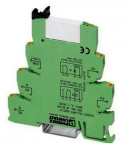StarCat
Industrial Engineering Tech
- Location
- Moab, UT USA
- Occupation
- Imdustrial Engineering Technician - HVACR Electrical and Mechanical Systems
I do not have a lot of experience with these. Do they exist in DPDT forms with both N.O. and N.C. switches?
Like something that could replace the function of a typical Octal base Ice cube relay?
Like something that could replace the function of a typical Octal base Ice cube relay?


